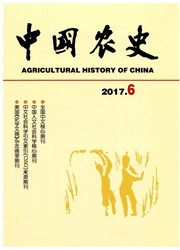

 中文摘要:
中文摘要:
三杨庄遗址汉代农田遗迹,是了解当时农田具体形态以及耕作技术的重要考古发现。文献记载的代田法并非一种单纯的土壤耕作技术,其中包含经过中耕等环节、实现叫与亩“岁代处”的中耕技术。汉代赵过所推行的代田法是在此基础上的技术创新。结合三杨庄聚落遗址在汉代的宏观与微观环境,以及汉代冬小麦的种植在黄河中下游地区得到广泛推广的史实,可知该遗址的农田形态正是为适应其周边环境的一种技术选择,这种技术选择与代田法抗旱保墒原理相一致。
 英文摘要:
英文摘要:
The farmland trace of Sanyangzhuang site is the important archaeological discoveries, which helps us understand the farmland shape and the farming techniques in the Han dynasty. Daitianfa(代田法 ) is cultivation technology, the ridge and ditch of the farmland would exchange their positions after cultivation. It was technical innovation that Daitianfa(代田法 ) was carried out by Zhaoguo( 赵过) in the Han dynasty. It is prove that the farmland trace is the resuh of Daitianfa, if research associate the winter wheat planting in the middle and lower reaches of the Yellow River was widely spread with the environment of Sanyangzhuang site during the Han dynasty. It's drought resistance principle was a technological choice that to adapt to the surrounding environment.
 同期刊论文项目
同期刊论文项目
 同项目期刊论文
同项目期刊论文
 期刊信息
期刊信息
